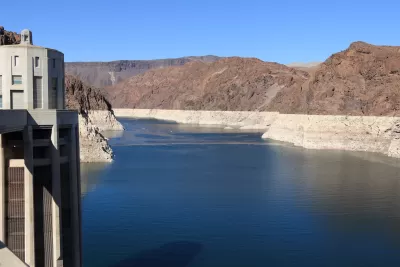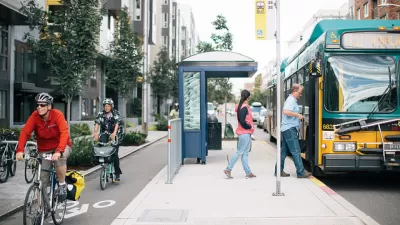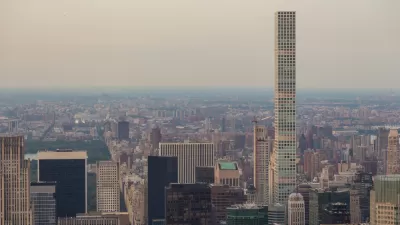Higher demand for electricity and lower capacity for production due to more intense heat waves are straining the power grid and causing concern for future energy production.

This year's heat wave, writes Jonathan Thompson, exposed critical vulnerabilities in our infrastructure. And "the heat’s biggest — and perhaps most consequential — infrastructure victim was the vast electricity grid that powers nearly every aspect of modern life."
"Extreme weather exacerbated by climate change can mess with the grid in any number of ways: Cold can freeze gas lines, while hurricanes topple transmission towers. But heat, particularly when combined with hydropower-depleting drought, has an especially deleterious effect, wreaking havoc on the power system just when the warmer climes need it most."
By their very existence, "power plants — the fossil-fueled 'heart' of the grid — make climate change worse and the planet even warmer, creating a feedback loop that resembles a gigantic electrical monster swallowing its own tail," Thompson writes. In addition, the hot air blown out of homes by air conditioners "actually exacerbates the urban heat island effect" and "raises the ambient temperature, increasing the need for air conditioning" in a vicious cycle. Adding to the problem, hydroelectric dams, which supply roughly 10 percent of U.S. power, lose generating capacity as their water levels drop "due to reduced flows and heat-induced evaporation." Today, reservoirs across the West–and their accompanying hydroelectric dams–are at dangerously low levels.
"The best way to avoid a heat-caused collapse of the grid," says Thompson, "is to slow human-caused climate change by cutting carbon emissions. That requires decarbonization of the grid by replacing fossil fuels with clean energy sources and–just as important–an overall reduction in energy use."
FULL STORY: Climate change wreaks havoc on the electricity grid

Alabama: Trump Terminates Settlements for Black Communities Harmed By Raw Sewage
Trump deemed the landmark civil rights agreement “illegal DEI and environmental justice policy.”

Planetizen Federal Action Tracker
A weekly monitor of how Trump’s orders and actions are impacting planners and planning in America.

How Atlanta Built 7,000 Housing Units in 3 Years
The city’s comprehensive, neighborhood-focused housing strategy focuses on identifying properties and land that can be repurposed for housing and encouraging development in underserved neighborhoods.

In Both Crashes and Crime, Public Transportation is Far Safer than Driving
Contrary to popular assumptions, public transportation has far lower crash and crime rates than automobile travel. For safer communities, improve and encourage transit travel.

Report: Zoning Reforms Should Complement Nashville’s Ambitious Transit Plan
Without reform, restrictive zoning codes will limit the impact of the city’s planned transit expansion and could exclude some of the residents who depend on transit the most.

Judge Orders Release of Frozen IRA, IIJA Funding
The decision is a victory for environmental groups who charged that freezing funds for critical infrastructure and disaster response programs caused “real and irreparable harm” to communities.
Urban Design for Planners 1: Software Tools
This six-course series explores essential urban design concepts using open source software and equips planners with the tools they need to participate fully in the urban design process.
Planning for Universal Design
Learn the tools for implementing Universal Design in planning regulations.
Jessamine County Fiscal Court
Caltrans
Institute for Housing and Urban Development Studies (IHS)
City of Grandview
Harvard GSD Executive Education
Toledo-Lucas County Plan Commissions
Salt Lake City
NYU Wagner Graduate School of Public Service





























